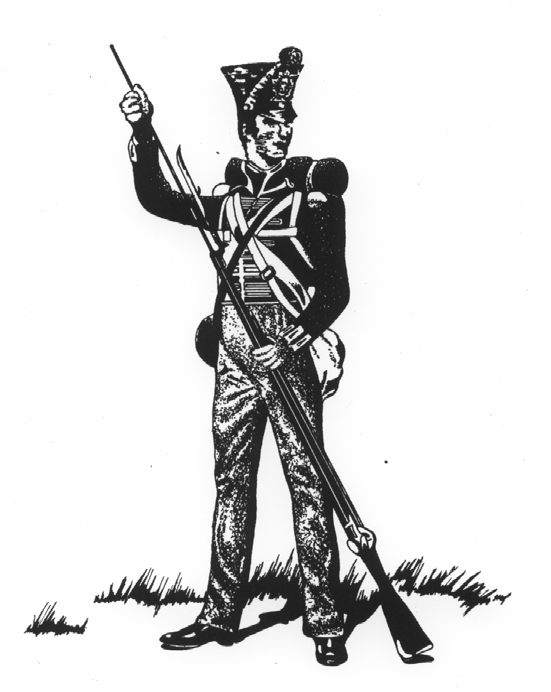



Peter Waters
Peter Waters was
born in Derrynoose
(Derynuse then), Keady, Co. Armagh in 1814. I'm guessing that he came
from a rural background. He was one of the 70% in Armagh that was
illeterate at that time, enlisting by just putting his mark x
and
if he was from a rural background then the percentage of illiteracy was
very much higher than the average of 70%.
In 1831 he enlisted with the 63rd Foot at Cootehill Co. Cavan on 31st May; Corporal Patrick O'Hara witnessed his enlistment also by putting his mark. Peter Waters received a bounty of three pounds for joining up. The 63rd Foot was also known as the 'Bloodsuckers' and also as 'The West Suffolk Regiment' until 1881. Over the previous 70 years or so the 63rd Foot saw action in the Seven Years' War in the Caribbean, The American War of Independence at Bunkers Hill and the French Revolutionary War and in the West Indies during the Napoleonic Wars.
Private
- 63rd Foot - 1830ish |
He passed his medical with flying colours and was confirmed to be in excellent health. He was 5ft 7 1/2" with red hair (on discharge, the colour of his hair was stated as sandy), grey eyes and of fair complexion. He was received in Chatham, the 63rd Foot's depot, on 31st December 1831. He left England 12th March 1832 bound for Sydney in New South Wales, Australia. The 63rd provided escorts and guards for convicts being sent to Australia. From Sydney, a detachment went on to Hobart (in Van Diemen's Land in those days). When in Australia the main purpose of the regiment was to protect the settlers from the Aborigines who found their land occupied and their travelling life styles curtailed. The regiment left Hobart late December 1833 aboard 'Lord Lyndoch' or 'Isabella' bound for Madras and landed in Madras 4th March 1834.. |
|
Mary Ann (daughter, aged 18) married Robert Hartford aged 37 on 29th May 1862 in Madras. At some time before 1872 she was widowed and married Clement Rabel (our ancestor) on 11 Apr 1872 in Bellary[M00107-3 521860].
================================